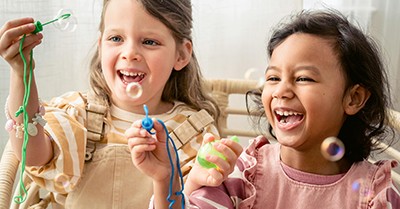The "100 Languages of Children" is a concept from the Reggio Emilia Approach, an educational philosophy that emphasizes children's diverse ways of expressing themselves and learning. This approach encourages children to explore their creativity, curiosity, and individuality through various mediums, fostering a deeper understanding of the world around them.
Core Concept 100 Languages of Children
The 100 Languages of Children is a concept from the Reggio Emilia Approach, an educational philosophy developed by Loris Malaguzzi. It emphasizes that children express themselves and learn in multiple ways, beyond just spoken and written language.
Core Idea of the 100 Languages of Children
Malaguzzi believed that children have a hundred ways to communicate, explore, and understand the world. These "languages" include:
- Visual Arts – Drawing, painting, sculpting
- Music & Dance – Expressing emotions through rhythm and movement
- Dramatic Play – Role-playing and storytelling
- Building & Construction – Using materials to create and problem-solve
- Science & Exploration – Observing, experimenting, and questioning
- Writing & Storytelling – Creating narratives and expressing ideas
- Sensory Play – Engaging with textures, sounds, and materials
Why It Matters in Education
Traditional education often focuses on verbal and written communication, but the Reggio Emilia philosophy recognizes that children learn best when they can express themselves in diverse ways. By embracing these "languages," educators create inclusive, engaging, and creative learning environments.
Benefits Of The 100 Languages of Children
The 100 Languages of Children approach offers numerous benefits for early childhood education, fostering creativity, communication, and holistic development. Here are some key advantages:
- Encourages Creativity—Children express themselves through various mediums like art, music, movement, and storytelling, enhancing their imagination.
- Supports Individual Learning Styles—Recognizes that every child learns differently and provides multiple ways to explore and understand concepts.
- Enhances Communication Skills—Helps children develop verbal and non-verbal communication, making them more expressive and confident.
- Promotes Emotional Intelligence—Allows children to convey emotions through different forms, fostering self-awareness and empathy.
- Strengthens Problem-Solving Abilities—Encourages critical thinking and exploration, helping children develop problem-solving skills.
- Builds Stronger Social Connections—Facilitates collaboration and teamwork, as children engage in group activities using different languages of expression.
- Creates a Joyful Learning Experience—Learning becomes engaging and fun, making children more eager to explore and discover.
How Can 100 Languages Of Children Be Implemented
Implementing the 100 Languages of Children involves creating an environment that nurtures creativity, exploration, and multiple forms of expression. Here’s how educators can bring this philosophy to life:
- Create a Rich Learning Environment—Design the environment with open spaces, natural materials, and interactive learning stations that encourage exploration.
- Use Diverse Materials—Provide clay, paint, building blocks, musical instruments, and digital tools to support children’s varied forms of expression.
- Encourage Project-Based Learning—Allow children to engage in long-term projects based on their interests, fostering deeper understanding and collaboration.
- Practice Responsive Listening—Teachers should actively listen to children's verbal and non-verbal communication, encouraging further exploration.
- Integrate Sensory Experiences—Incorporate activities that engage all five senses, such as storytelling, movement, and hands-on experiments.
- Document Learning—Use photos, videos, and written observations to capture children's progress and reflections.
- Promote Collaboration—Encourage teamwork through group activities that allow children to express themselves in different ways.
Activities That Align With The 100 Languages of Children
Here are some activities that align with the 100 Languages of Children approach, encouraging creativity, exploration, and diverse forms of expression:
Creative Arts & Expression
-
Storytelling with Illustrations – Children narrate stories and illustrate them using drawings, paintings, or clay models.
-
Music & Movement – Incorporate dance, rhythm exercises, and musical instruments to express emotions and ideas.
-
Dramatic Play – Set up role-playing scenarios where children act out real-life situations or imaginative stories.
-
Shadow Play – Children create shadow puppets and tell stories using light and movement.
Collage Creations – Using recycled materials, children design collages to express emotions or ideas. - Poetry & Word Art – Encourage children to write poems and illustrate them with drawings or calligraphy.
Hands-On Exploration
- Sensory Play – Use sand, water, and textured materials to engage children’s senses and encourage discovery.
- Building & Construction – Provide blocks, recycled materials, and natural objects for children to create structures and experiment with design.
- Nature-Based Learning – Encourage outdoor exploration, gardening, and observing natural elements to inspire curiosity.
- Loose Parts Play – Provide natural and everyday objects for children to build and create freely.
- Clay & Sculpture – Let children mold clay into shapes, figures, or abstract designs to express their thoughts.
- Watercolor Experimentation – Encourage children to mix colors and explore different painting techniques.
Collaborative & Inquiry-Based Learning
- Group Art Projects – Children work together on murals, collages, or sculptures to express collective ideas.
- Science Investigations – Conduct simple experiments where children predict, observe, and document their findings.
- Interactive Storytelling – Children contribute to a shared story, adding their own twists through words, drawings, or dramatic play.
- Community Mapping – Children create maps of their neighborhood, highlighting places important to them.
- Music Composition – Let children experiment with instruments and create their own rhythms or songs.
- Interactive Story Building – Groups of children contribute to a shared story, adding their own twists through words, drawings, or dramatic play.
Nature & Science-Based Learning
-
Outdoor Art Stations—Set up painting or drawing areas outside to inspire creativity in nature.
-
Mini Ecosystem Creation—Children build small terrariums or gardens to observe plant growth.
-
Weather & Sky Observation—Encourage children to track changes in the sky and create art based on their observations.
Further Reading
Guide To The Reggio Emilia Approach
Incorporating Theorists Into Early Childhood Documentation
Pedagogical Approaches In Early Childhood
